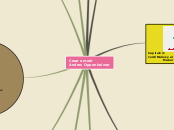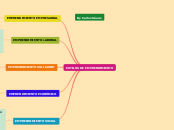PRACTICA BASADA EN LA EVIDENCIA
The Solar System is the gravitationally bound system of the Sun and the objects that orbit it, either directly or indirectly. Of the objects that orbit the Sun directly, the largest are the eight planets, with the remainder being smaller objects, the dwarf planets, and small Solar System bodies.
2. Formulación de la pregunta clínica.
Neptune is about the size of Uranus and is known for supersonic strong winds.
Neptune is far out and cold.
The planet is more than 30 times as far from the sun as Earth.
Neptune was the first planet predicted to exist by using math, before it was visually detected. Neptune is about 17 times as massive as Earth and has a rocky core.
Las condiciones de interés son definidas mediante criterios específicos
Neptune has thirteen moons that we know of and one more waiting for confirmation.
The largest moon is slightly smaller than Earth's Moon and has active volcanoes which erupt like geysers and eject nitrogen frost over the surface.
Name this moon and at least 4 others.
Son 4 estructuras básicas que conservan diferentes modelos de preguntas clínicas
Resultados de interes
Intervención de comparación
Intervención
Paciente
1. Utilización de la investigación y practica basada en la evidencia.
It was once considered a planet but in August 2006 the International Astronomical Union (IAU) downgraded the status of Pluto to that of “dwarf planet.”
Pluto is unlike other planets in many respects. It is smaller than Earth's moon; its orbit is highly elliptical.
It's a cold, rocky world with a tenuous atmosphere. Pluto is a very active ice world that's covered in glaciers, mountains of ice water, icy dunes, and possibly even cryovolcanoes that erupt icy lava made of water, methane or ammonia.
Según la teoría de difusión de Rogers:
How long does it take for Pluto to go around the sun?
Se predice que aquellas innovaciones que tendrán mayor probabilidad de ser adoptadas son:
Que los resultados esperados sean fácilmente observados por la mayoría y que permitan la experimentación
Que carezcan de complejidad
Que sean compatibles con las vigentes
Las que supongan una alta ventaja relativa
Los estadios son:
Implantación
Toma de decisión
Persuasión
Los 5 factores determinantes de que las innovaciones puedan incorporarse a la practica son:
Observabilidad
Experimentalidad
Complejidad
Compatibilidad
Ventaja relativa
Los elementos del proceso de difusión son:
Sistema social
Tiempo
Canales de comunicación
Innovación
En la toma de decisiones clínicas hemos de integrar:
Preferencias del paciente
Mejor evidencia externa y maestria clinica
La disciplina de enfermería tiene una gran tradición en la investigación sobre utilización de la investigación
Uno de los factores individuales que favorece el uso de la investigación es:
El grado académico
Los determinantes organizacionales son los que mas influyen en el uso de los resultados de la investigación
3. Introducción a la lectura critica.
Saturn is known most for its rings.
Galileo Galilei first thought it was an object with three parts: a planet and two large moons on either side.
Not knowing he was seeing a planet with rings, the stumped astronomer entered a small drawing — a symbol with one large circle and two smaller ones — in his notebook.
The rings are made of ice and rock and scientists are not yet sure how they formed. The gaseous planet is mostly hydrogen and helium.
Para valorar su calidad se indagan
A planet's day is the time it takes the planet to rotate or spin once on its axis.
Write down Saturn's day measured in Earth days.
Procedimientos metodologicos para evitar errores
Principales aspectos para evaluar críticamente un articulo
Importancia de los resultados
Aplicabilidad en el medio
Validez de los resultados
5. Practica basada en la evidencia en el contexto educativo.
Jupiter is a giant gas world that is the most massive planet in our solar system.
Its swirling clouds are colorful due to different types of trace gases.
And a major feature in its swirling clouds is the Great Red Spot, a giant storm more than 10,000 miles wide. It has raged at more than 400 mph for the last 150 years, at least.
Jupiter has a strong magnetic field, and with 75 moons, it looks a bit like a miniature solar system.
Principios de la enseñanza de la PBE:
Jupiter has a strong magnetic field, and with 75 moons, it looks a bit like a miniature solar system.
Name the 4 most known moons.
Principio de formación de criterio y de la educación continua /permanente
Principio de la expresion afectiva ,de contextualizacion y de oportunidad
Principio de aprendizaje evolutivo ,de cooperación y participación
Principio de la realidad ,de adaptación ,de actividad y practicidad
El modelo de enseñanza de la PBE es el ACE Star Model y se organiza en 5 fases:
How long does it take for Jupiter to go around the sun?
Integración en la evolución
Integración en la practica
Traducción a la practica de las recomendaciones
Síntesis de la evidencia
Descubrimiento del conocimiento
En 2006,los autores que desarrollaron el paradigma de la PBE propusieron 3 modelos de enseñanza distintos:
A planet's day is the time it takes the planet to rotate or spin once on its axis.
Write down Jupiter's day measured in Earth days.
Enseñanzas técnicas especificas de la PBE
Enseñanza de la practica clínica con evidencia
Practica del rol modelado en la evidencia
Las características que deben tener estudiantes de enfermería para el aprendizaje de la ( PBE ) se encuentra:
Predisposición a compartir el conocimiento
Reflexión critica sobre la practica profesional
Motivación hacia la formación permanente
Disposición favorable hacia la innovación
4. Dificultades para la practica basada en la evidencia .
Mercury is the smallest, only a little bit larger than Earth's moon. Mercury has no moon.
It experiences dramatic changes in its day and night temperatures: Day temperatures can reach a scorching 840 F (450 C), which is hot enough to melt lead. Meanwhile, on the night side, temperatures drop to minus 290 F (minus 180 C).
It also has a very thin atmosphere of oxygen, sodium, hydrogen, helium, and potassium and can't break-up incoming meteors, so its surface is pockmarked with craters, just like the moon.
Entre las barreras identificadas por los profesionales de enfermería y medicina sobre la aplicación de la PBE ,encontramos:
Our Solar System has eight “official” planets which orbit the Sun.
Each planet is at a different distance from the sun. Name its position.
La evidencia encontrada es controvertida
La evidencia no es de fácil acceso
Las implicaciones para la practica no están claras
La falta de evidencia









